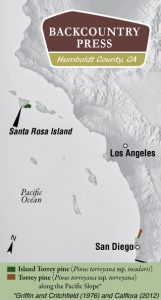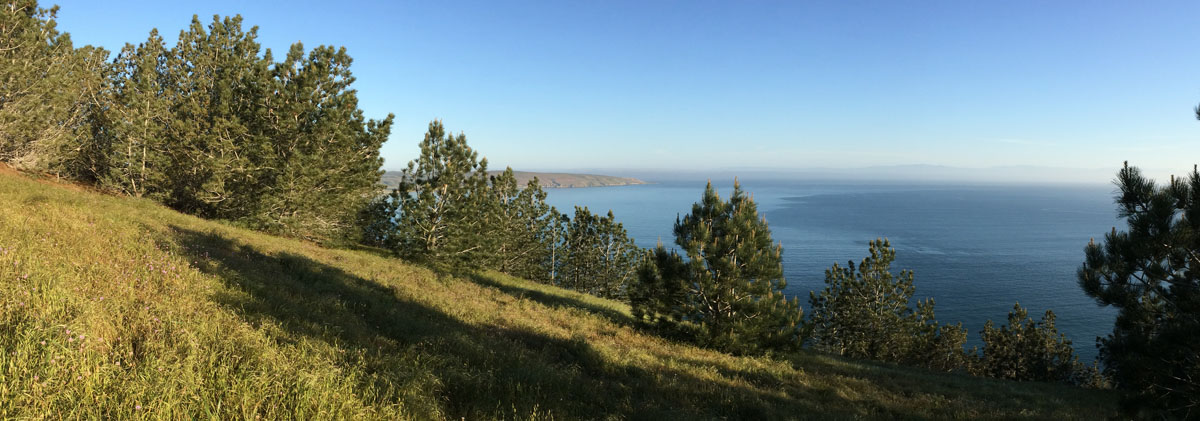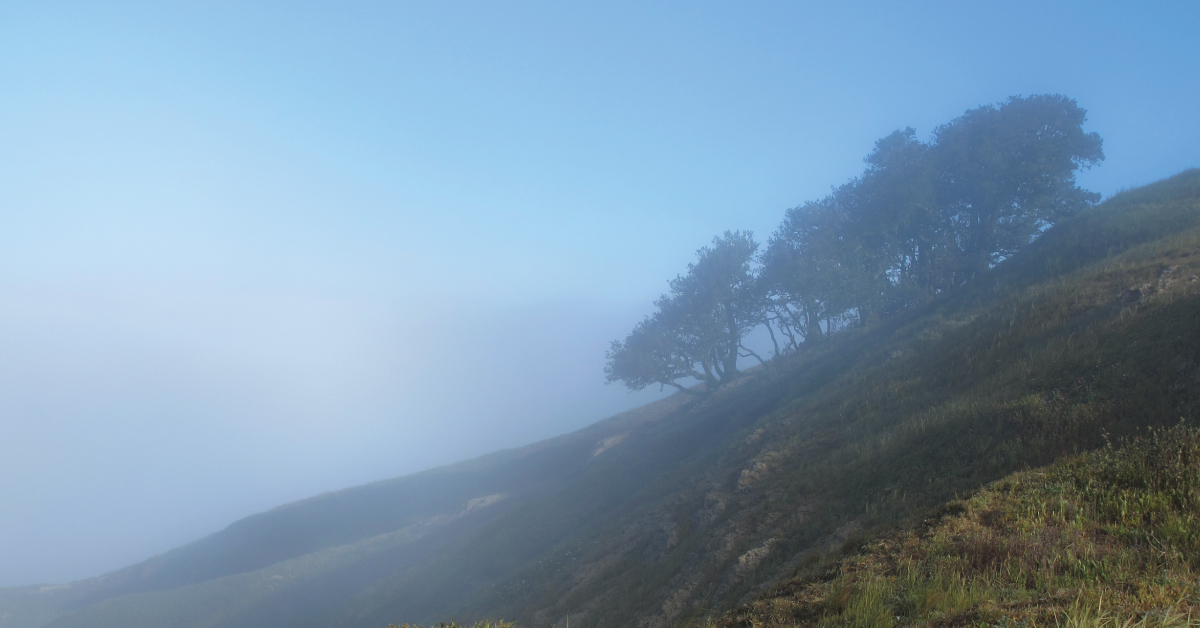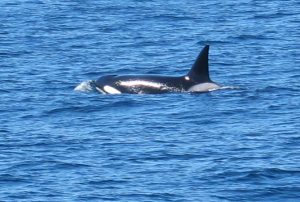I spoke with Cliff Berkowitz on KHUM’s Happy Trails about places to visit–starting now–to explore spectacular Humboldt County wildflowers. Flowers start flowering early because of the temperate nature of the region. This means that you can find wildflowers starting in January near the coast, all the way to June and July inland in our mountains.
Continue reading “Humboldt County Wildflowers”Santa Rosa Island Plants
This is the last of my four posts about Santa Rosa Island. It is simply a photographic tour of plants that have not yet been highlighted in previous posts including other interesting, rare, endemic, and common Santa Rosa Island plants.
- Santa Rosa Island Plant list I generated from CalFlora
Torrey Pine Forest
Santa Rosa Island Torrey pine (Pinus torreyana ssp. insularis)

The first time Santa Rosa Island landed on my plant exploring radar screen was when I learned about the Torrey pine some time in the early 2000s. I had never even seen this tree until I took a trip to Torrey Pines State Reserve north of San Diego in early 2012. It is the rarest pine in North America with several thousand “mature” trees on both the mainland and island. My bucket list for understanding the ecology of this species is complete now that I have visited the island.
As mentioned in an early post, pigs were first introduced on Santa Rosa in the mid 1800s. By 1888 it is estimated, based on historical records, that there were only 100 Torrey pines on the island. Today, all herbivorous megafauna have been removed (minus 5 sterile horses from the old ranch) and the Torrey pine are thriving–with an estimated 12,300 trees–one-quarter of which are saplings!
Researchers debate the arrival time of the Santa Rosa Torrey pine, estimating anywhere from 6,000 to over 1 million years. Disagreement also exists as to whether these two population represent subspecies or varieties of each other. Some argue the two populations are genetically different enough to be considered a subspecies, others prefer distinction at the variety level. Regardless, it is a beautiful species and well worth seeing in the wild.
The Cloud Forest
Santa Rosa Island
After a two hour boat ride from Ventura Harbor that included sightings of gray and killer whales, passengers disembarked onto a newly-built pier and subjacent white sand beaches. We had arrived. Once unloaded, the park ranger offered an orientation rejoicing in our good fortunes. The high winds and thick fog which had typified the previous few weeks had now subsided. The forecast for the coming days included sun, low winds, and perfect temperatures.
Fog and wind are omnipresent on Santa Rosa Island and play a major role in shaping the landscape. Any plants with a propensity for upward growth are restricted to canyons, particularly north sloping ones. Here they find refuge from the wind and often more available moisture provided by the meager 15-20 inches of annual rain. However near the highest island peaks–like Black Mountain at 1,300 feet plants have adapted to wind and fog in different ways.
Continue reading “The Cloud Forest”Santa Rosa Island

Channel Islands National Park
In 1998 I first visited the Channel Islands. This was early in my naturalist career but I was struck, none-the-less, by the beauty and isolation I found on Santa Cruz Island. On that trip I first saw the endemic island scrub jay (Aphelocoma insularis) and began to develop an understanding and interest in island biogeography. Twenty years later this experience brought me to Santa Rosa Island–in major part to see the Torrey pine grove–but also for the opportunity to explore one of the least visited places in Southern California.
Santa Rosa Island is separated from the mainland by over 25 miles of water. The next closest landmass is San Miguel, which is now isolated from Santa Rosa by three miles of water. Isolation has nurtured endemism on both a localized island level as well as on a unifying level between islands. Combined, all the Channel Islands are home to 150 species of unique plants and animals. Santa Rosa hosts 46 of those, including six endemic plants that grow nowhere else.
Continue reading “Santa Rosa Island”



